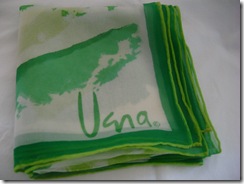Compassion. I think I know what it means to me, and I know my penchant for projecting onto others what I think it must also mean to them. And more often than not, I come to learn what I have projected is not necessarily at all something means to another. So difficult, finding the commonality of our languages, even when we speak the same language. I would have surely thought compassion would have a somewhat universal meaning and would be a safe conversational word to express humane, spiritual and faith based concepts.
Apparently not so much in the faith based world. Reading a post on Compassion at Better Than Believing blog this morning was an eye opener for me. Translated from the scriptures and texts into the English may leave behind some of the intended meanings in the original writings. Calls into question then, what it means to follow the popular belief of the Jesus teaching of compassion.
The differing meanings of the words compassion as cited in the post:
racham as compassion; Hebrew racham, which may have evolved from a root associated with cuddling a baby or little child, is frequently rendered compassion but has a variety of other meanings.
chamal, which originally may have meant commiserate; another Hebrew word. The difference between chamal and racham is that chamalnever seems to be connected with emotions but always suggests a decision about how to treat people
Two other Hebrew words are occasionally translated compassion: chen, which usually appears in English as grace or favor, and chesed, which most often is translated steadfast love or mercy.
The word that usually appears as compassion in the gospels must always be accompanied by a verb because the word in Greek, splagchnizomai, is a verb. It is based on splagchnon which means intestines, bowels, guts, or viscera. When a people today talk about having a visceral reaction to someone, like the authors and editors of the gospels they are acknowledging that intense emotions are experienced in the digestive tract. A crude but accurate translation of splagchnizomai would be torn up in the gut. In the gospels splagchnizomai usually describes a reaction of Jesus to the suffering or distress of other people. Occasionally the translators use the word pity instead of compassion.
His post then poses question about meaning of compassion as is typically understood from the biblical texts. He suggests that making a virtue of compassion as if it is understood in the same way by all may not create a bit of a problem in understanding the meaning and intent of the teachings. If as a visceral feeling, gut reaction, one feels it or one doesn't. He then cites the well practiced masking people must do with their personal feelings in the helping professions in order to provide care (ie, doctors, nurses, EMT, etc) effectively.
I well know the experience of needing to turn off personal feeling less my compassion be exhausted before a nine hour work shift is completed. It provides a safety valve that permits me to do my job, helping large numbers of others, without depleting my personal resources. I don't think my sense of compassion fully dissipates, but it is necessary for it to recede to the background in order to more effectively perform the helping services of my profession.
His post goes on to suggest that followers of Jesus must also learn to train themselves with regard to their personal sense of compassion so that they might provide a loving and merciful response within the context of how they experience their sense of compassion.
I intend to contemplate this for a while, incorporate it into my understanding of compassion, and revisit what I think the scriptures might be suggesting Jesus meant in use of the word compassion. It sounds like there are differing meanings applicable to different situations.














